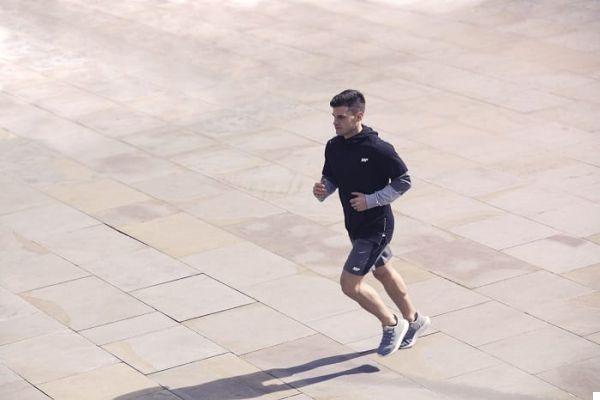The term "cardio" refers to a type of exercise in which the intensity is not high to the point of being able to use aerobic metabolism. In fact, aerobic metabolism makes it possible to exploit oxygen as a comburent together with different types of substrate (glycogen or fats) which act as fuel.
The process is called "oxidative phosphorylation" and allows the production of up to 32 molecules of ATP for the same energetic substrate of glycolysis which produces only 2.
Glycolysis is a much less efficient metabolism but allows you to produce energy more quickly. When the intensity of the exercise exceeds a certain threshold it is necessary for the body to switch to anaerobic metabolism to compensate for the intensity.
Since this type of metabolism is much less efficient, fatigue occurs in a relatively short time and it is no longer possible to maintain this intensity. Aerobic exercise, or cardio, is by definition of low or moderate intensity and therefore allows you to take advantage of a more efficient metabolism and can therefore last longer.
Cardio benefits
Cardio-style exercise has some benefits, but these can be fully achieved with HIIT-style exercises. A benefit of cardio is to accustom the heart to work at a higher intensity than at rest for a long time.

This increased blood circulation leads to a "cleaning" of the arterial vessels and hinders the accumulation of harmful substances and the formation of arteriosclerotic plaques. Another benefit is the increased consumption of fat rather than glycogen as an energy source. Finally, training with aerobic exercise makes the body more efficient at this type of metabolism.
1. Adaptation to aerobic exercise
The body undergoing aerobic exercise becomes more efficient at this type of exercise as the muscle cells become smaller and the number of mitochondria increases.
Muscle cells shrink in size as oxygen needs to diffuse into the muscle cell membrane to use oxygen. The diffusion process is very efficient over small distances.
The volume of the sarcoplasm can also be reduced because it is not necessary to act as a warehouse for the glycogen, this employs a
considerable space (1 molecule of glycogen requires 2 of water).
2. Consumption of fat
The consumption of fats is favored as these allow a greater production of energy but in a longer time. The metabolisms of this substrate are numerous and allow to produce a high number of energy transporters.

In reality, the consumption of fat is limited only to the cardio session while in the following hours the metabolism is practically at rest. In an aerobic metabolism, on the other hand, the glycolysis process leads to the production of 2 ATP and therefore requires a greater substrate and lactate is also produced.
This is a waste molecule that must be collected and then converted by the liver. This process requires up to 7 ATPs. On balance anaerobic exercise allows you to
burning a greater share of calories at rest as well as promoting strength and hypertrophy.
3. Reduced vascular risk
The vascular benefit must be attributed to cardio exercise but this is not the only method to benefit from it. High intensity activities such as HIIT or anaerobic style circuit training allow you to increase blood flow even more and thus "clean up" the walls of arterial vessels and also force the heart to work at higher intensities.
The human body is made for performance, the human being is a mostly predatory animal and not a prey one. Our body must therefore be stimulated in the way it is built to give its best and should not be tired of exhaustion.
4. Absolute benefit of cardio
A benefit that belongs purely to aerobic exercise is to help you relax. In fact, cardio reconciles the possibility of training in the midst of nature. Furthermore, since the intensity is moderate or low, there is no psychological and physical “burden” to commit.

These two aspects offer the opportunity to relax while remaining active and thus facilitate the recovery processes (both physical, with the disposal of waste metabolites, and mental, given by the need to relax) from intense workouts.
A good idea, therefore, could be a run in the middle of nature at medium-low intensity or a walk in the mountains once or twice a week in the company of friends or family.


























